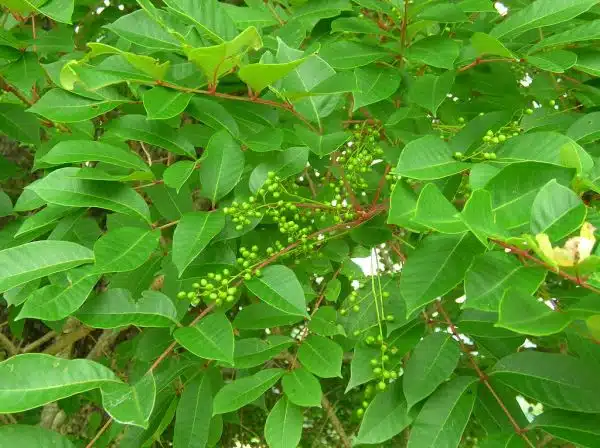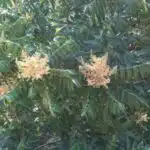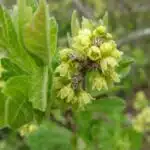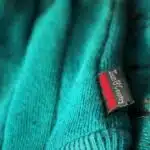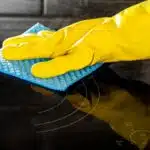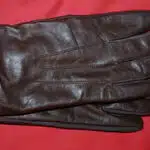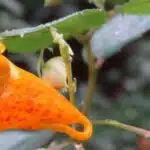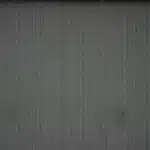Poison sumac is a toxic plant that can cause severe skin irritation and discomfort. If you have ever encountered poison sumac, you know how unpleasant it can be. Eradicating poison sumac can be a challenging task, but it is necessary to keep yourself and others safe from its harmful effects. As a poison sumac eradication expert, I have spent years studying the plant and developing effective methods for removing it from various environments.
Over the course of this article, I will share with you my knowledge on how to eradicate poison sumac. Whether you are a homeowner dealing with a small outbreak or a park ranger responsible for maintaining public safety in large natural areas, this guide will provide you with the tools and techniques needed to effectively remove poison sumac. By following these steps, not only will you protect yourself and those around you from harm, but you will also serve your community by ensuring that it remains free of dangerous plants.
Identifying Poison Sumac
When it comes to identifying poison sumac, there are a few key things to keep in mind. For starters, it’s important to know where this plant typically grows. Poison sumac tends to thrive in wetlands and other areas with high levels of moisture, such as swamps or bogs. It can also be found near streams or lakes and in wooded areas.
Seasonal changes can also play a role in identifying poison sumac. During the spring and summer months, the plant produces small greenish flowers that eventually give way to clusters of white berries. In the fall, the leaves turn from green to red or orange before dropping off entirely.
One of the best ways to identify poison sumac is by its visual cues and distinguishing features. The plant has smooth stems that are reddish-brown in color and can grow up to 20 feet tall. Its leaves are arranged in pairs along each stem and have a distinctive shape – they’re oval-shaped with pointed tips and serrated edges. The most telling feature of poison sumac, however, is its clusters of berries which grow on short stalks and hang down from the branches like grapes.
Understanding the dangers of poison sumac is crucial if you want to eradicate it successfully.
Understanding The Dangers Of Poison Sumac
After identifying poison sumac, it is important to understand the dangers associated with this plant. Exposure to poison sumac can lead to a range of symptoms, including itching, redness, and blistering. These symptoms can last for several weeks or even months and can be quite severe in some cases. It is important to seek medical attention if you experience any of these symptoms, particularly if they persist or become worse over time.
In addition to the short-term symptoms, exposure to poison sumac can also have long-term effects on your health. Repeated exposure can increase your risk of developing skin cancer and other related conditions. Therefore, it is crucial that you take steps to avoid contact with poison sumac and eliminate any infestations as soon as possible.
To effectively eradicate poison sumac from your property, there are several steps that you should follow. First, assess the extent of the infestation and identify all affected areas. Next, develop a plan for removing the plants from these areas using appropriate tools and techniques. Finally, monitor the area closely for signs of regrowth or reinfestation so that you can take action quickly if necessary.
- Wear protective clothing such as gloves and long-sleeved shirts when handling poison sumac
- Use herbicides or natural remedies like vinegar or boiling water to kill the plants
- Remove any dead plants carefully to prevent spreading any oils left by the plant
- Consult a professional eradication service if necessary
Understanding the dangers associated with poison sumac is essential for anyone who wants to maintain a safe and healthy environment. By taking appropriate measures to eliminate infestations and protect yourself from exposure, you can enjoy your property without fear of contracting skin-related illnesses later on. The next section will provide detailed information on assessing the extent of an infestation and developing an effective plan for eradication.
Assessing The Extent Of The Infestation
As an expert in poison sumac eradication, the first step in the process is to assess the extent of the infestation. This is done through various methods such as conducting an aerial survey and taking soil samples. By conducting an aerial survey, we can determine the boundaries of the infested area and how much land needs to be treated. Soil sampling helps us understand the type of soil that poison sumac thrives in and how deeply rooted it is.
Aerial surveys are a crucial tool for assessing the extent of poison sumac infestations. By using drones or planes equipped with high-resolution cameras, we can quickly identify areas where poison sumac is growing. This information allows us to create detailed maps that show where the plants are located and how much land they cover. These maps are essential when planning removal efforts as they help us determine which areas require more attention.
Soil sampling is another method we use to assess the extent of a poison sumac infestation. By testing samples from different areas within an infested zone, we can determine the soil’s acidity levels, nutrient content, and other factors that affect plant growth. This information helps us understand why poison sumac thrives in certain areas and what measures need to be taken to prevent its spread.
By conducting aerial surveys and taking soil samples, we can accurately assess the extent of a poison sumac infestation. With this information, we can develop effective removal strategies that address all areas affected by this invasive plant species. In the next section, I will discuss how to prepare for removal efforts and ensure that they are successful in eradicating poison sumac from your property once and for all.
Preparing For Removal
- Before attempting to eradicate poison sumac, safety gear such as gloves, eye protection and a face mask should be worn to protect the skin and eyes from contamination.
- After removal of the plant material, proper disposal should be done to minimize the spread of the poison sumac.
- Clothing that fully covers the body should be worn to protect skin from coming into contact with the plant material.
- Protective gear should be changed often to avoid cross contamination while working.
- All plant material should be double bagged and sealed in plastic to ensure that the poison sumac will not spread.
- Disposal of the plant material should be done in accordance with local and federal regulations to ensure safety.
Safety Gear
Selecting appropriate safety gear is crucial for anyone preparing to remove poison sumac. Poison sumac contains a resin that causes an allergic reaction, making it imperative to protect oneself from direct contact. The appropriate safety gear should be affordable and effective enough to prevent the skin from coming into contact with the plant’s oils.
When selecting appropriate safety gear, an expert in poison sumac eradication would recommend wearing long-sleeved shirts, pants, and gloves. These items of clothing will provide ample coverage to protect your skin from direct exposure to the plant’s oils. Additionally, it is important to wear eye protection if you are removing sumac that is above eye level.
There are many affordable options for selecting appropriate safety gear when preparing for poison sumac removal. You don’t have to break the bank just to keep yourself safe from this poisonous plant. A simple pair of gardening gloves, long-sleeved shirts and pants can provide adequate protection against poison sumac. Remember: investing in proper safety gear is essential not just for your health but also for those around you who may come into contact with the plant’s oils indirectly.
Disposing Of Plant Material
When preparing for the removal of poison sumac, it is essential to not only protect oneself but also properly dispose of any plant material. Poison sumac contains urushiol oil, which can remain potent even after the plant has been uprooted or cut down. It is crucial to wear gloves and long-sleeved clothing when handling the plant material to avoid direct contact with the oils.
Once the poison sumac has been removed, it is important to dispose of it properly. Burning the plant is not recommended as it can release harmful smoke into the air. Instead, composting poison sumac or repurposing its wood for other uses are safe and environmentally friendly options. Composting involves breaking down organic matter into nutrient-rich soil, which can then be used in gardens or landscaping projects. Repurposing poison sumac wood, such as using it for firewood or crafting, can also be a sustainable solution.
In summary, disposing of poison sumac should be done carefully and responsibly to prevent further harm to people and the environment. Composting and repurposing are viable options that reduce waste and promote sustainability while maintaining safety measures against this poisonous plant’s harmful effects. As a poison sumac eradication expert, I highly recommend these methods for proper disposal of any plant material during removal processes.
Protective Clothing
As a poison sumac eradication expert, preparing for the removal of this poisonous plant requires careful planning and execution. One crucial aspect to consider is choosing appropriate, durable protective clothing. Poison sumac contains urushiol oil that can cause skin irritation or even severe allergic reactions when it comes into contact with the skin. Thus, wearing gloves and long-sleeved clothing are essential during the removal process.
Apart from gloves and long-sleeved clothing, proper footwear is also crucial when eradicating poison sumac. Poison sumac often grows in damp areas such as swamps, bogs, or wetlands, making it necessary to wear waterproof boots that can protect the feet from getting wet. Moreover, poison sumac plants have sharp branches and thorns that can pierce through footwear with inadequate protection.
In conclusion, choosing appropriate protective clothing during poison sumac eradication is vital to avoid direct contact with the plant’s harmful oils. Wearing durable gloves and long-sleeved clothing can prevent skin irritation or allergic reactions while waterproof boots can protect feet from getting wet while also providing ample protection against sharp branches and thorns. By following these safety measures during poison sumac removal, individuals can ensure their safety while effectively eliminating this dangerous plant.
Tools And Materials Needed
Preparing for the removal of poison sumac is a task that requires careful planning and preparation. Before starting the process, it is important to identify the specific plants that need to be removed and ensure that you have access to all the necessary tools and materials. This will help to ensure that the project proceeds smoothly and safely.
Choosing equipment is an important part of preparing for poison sumac removal. The most important piece of equipment is a pair of sturdy gloves, which will protect your hands from contact with the plant’s oils. Additionally, you should have a pair of long pants, long sleeves, and closed-toe shoes or boots to protect your skin from exposure. Other useful tools include pruning shears or loppers for cutting branches, a saw for larger limbs, and a shovel or spade for digging up roots.
Safety measures are also an essential component of preparing for poison sumac removal. Before you begin work, make sure to let someone know what you’re doing and how long you’ll be working in case of an emergency. You should also have a first aid kit on hand in case anyone gets injured during the process. Finally, be sure to take frequent breaks and hydrate regularly to avoid heat exhaustion or dehydration.
Now that you’ve chosen your equipment and taken safety measures into account, it’s time to move on to protective gear and safety precautions. By taking these steps before beginning work on removing poison sumac plants, you’ll help ensure that the project goes smoothly and safely, allowing you to get rid of these dangerous plants once and for all.
Protective Gear And Safety Precautions
Did you know that poison sumac can cause severe skin irritation that can last up to three weeks? This is why it is essential to take the necessary safety precautions when attempting to eradicate it. Choosing appropriate clothing is crucial in preventing skin exposure. Wear long-sleeved shirts, pants, gloves, and closed-toe shoes. Additionally, consider wearing a hat and eye protection.
Handling and disposing of contaminated gear is just as important as choosing appropriate clothing. Follow these four steps to ensure proper handling:
- Remove all contaminated clothing immediately after coming into contact with poison sumac.
- Wash exposed skin thoroughly with soap and water.
- Place contaminated clothing in a sealed plastic bag before disposing of it.
- Wash all tools used in the eradication process with soap and water.
As a poison sumac eradication expert, I cannot stress enough how crucial it is to follow these guidelines for your safety. When working on removing poison sumac, wear protective gear that will prevent contact with your skin, such as gloves or long-sleeved shirts. Additionally, always keep in mind the proper handling of contaminated gear.
In the next section about manual removal techniques, we will discuss step-by-step procedures on how to remove poison sumac manually while keeping yourself safe from any potential harm during the process.
Manual Removal Techniques
- When engaging in manual removal of poison sumac, it is important to wear protective clothing and gloves to avoid contact with the plant’s sap.
- Clothing should be tightly woven fabric that covers exposed skin to prevent contact with the plant’s urushiol oil.
- Gloves should be rubber or vinyl and should reach up to the elbow to ensure protection when pruning and cutting the plant.
- It is important to be aware of any contact with the plant and to immediately wash off any sap that may have come into contact with the skin.
Gloves
Choosing the right gloves is crucial in manual removal techniques of poison sumac. As an expert in poison sumac eradication, I recommend using thick and durable gloves that provide proper protection to the skin. It is important to note that not all gloves can protect you from poison sumac’s oil, urushiol. Hence, it is essential to use gloves made of materials like rubber or nitrile, which can prevent urushiol from seeping through the fabric.
Proper glove maintenance is equally important to ensure maximum protection against poison sumac. After each use, gloves should be thoroughly washed with soap and water to remove any remaining traces of urushiol. It is also advisable to discard gloves after a single-use as they might contain traces of urushiol even after washing. Additionally, it is essential to store gloves in a dry and cool place when not in use to avoid damage or contamination.
In conclusion, choosing the right gloves and maintaining them appropriately are critical factors while manually removing poison sumac. Wearing protective gear while handling such plants can prevent severe skin irritations and allergic reactions caused by urushiol’s exposure. As a responsible individual, it is our duty to serve others by ensuring our safety measures while performing tasks like these.
Protective Clothing
Choosing appropriate protective clothing is crucial in manual removal techniques of poison sumac. As an expert in poison sumac eradication, I recommend using durable clothing that can provide maximum protection against urushiol, the plant’s oil that causes skin irritations and allergic reactions. Protective clothing should be made of materials like nylon or polyester, which can prevent urushiol from seeping through the fabric.
Proper fit and sizing for protective gear are equally important while manually removing poison sumac. Loose-fitting clothes can expose your skin to urushiol, whereas tight-fitting clothes can cause discomfort and hinder movement. It is advisable to wear long-sleeved shirts, pants, and socks that cover your entire body while performing such tasks. Additionally, wearing a hat or a bandana can protect your face and neck from contact with the plant.
In conclusion, choosing appropriate and durable protective clothing is essential for safe manual removal techniques of poison sumac. Proper fit and sizing are equally important factors to consider while selecting protective gear. Wearing full-body coverage, including hats or bandanas, can prevent exposure to urushiol and avoid severe skin irritations caused by contact with the plant’s oil. As responsible individuals serving others’ needs, we should prioritize our safety measures when handling such plants.
Chemical Treatment Options
Manual removal techniques can be effective at removing poison sumac, but in some cases, chemical alternatives may be necessary for complete eradication. Chemical treatment options are often preferred by experts because they provide a more thorough and long-lasting solution. However, it is important to consider the potential environmental impact of these methods.
There are several chemical alternatives available for removing poison sumac, including glyphosate-based herbicides and triclopyr. Glyphosate-based herbicides work by inhibiting a specific enzyme in plants, leading to their eventual death. Triclopyr works by disrupting plant growth hormones and causing cell membranes to break down. Both of these chemicals can be effective at killing poison sumac, but they must be used carefully to avoid harming other plants or animals in the surrounding area.
When considering chemical treatment options for poison sumac eradication, it is important to also think about the potential environmental impact of these methods. Chemicals can have negative effects on soil health, water quality, and nearby wildlife populations. It is crucial to follow all instructions carefully when applying chemicals and to use them only as directed. Additionally, it may be helpful to consult with an expert in poison sumac eradication to ensure that you are using the most appropriate method for your specific situation.
Preventing regrowth after poison sumac removal is just as important as the initial eradication process. In order to prevent new growth from occurring, it may be necessary to repeat chemical treatments or manually remove any new plants that appear. Regular maintenance and monitoring of the affected area can help ensure that poison sumac does not return. By taking proper precautions during both the removal and prevention phases, you can effectively eradicate poison sumac from your property while minimizing any negative environmental impacts.
Preventing Regrowth
As a poison sumac eradication expert, I have seen firsthand how persistent and resilient this plant can be. Even after successful removal, regrowth can occur if proper preventative measures are not taken. Preventing regrowth is essential for long term maintenance of a poison sumac-free environment.
One effective way to prevent regrowth is to cover the area where the poison sumac was removed with a thick layer of mulch or other organic material. This will help smother any remaining roots and prevent new growth from taking root. Additionally, regularly inspecting the area for any signs of regrowth and immediately removing any new plants can help prevent future infestations.
Another important step in preventing regrowth is to address any underlying environmental factors that may have contributed to the original infestation. For example, poor soil conditions or excessive moisture can create an environment that is favorable for poison sumac growth. Addressing these issues through soil amendments or drainage improvements can help prevent future infestations.
In order to maintain a poison sumac-free environment over the long term, it is important to be vigilant and proactive in preventing regrowth. By taking steps such as covering the area with mulch, regularly inspecting for signs of new growth, and addressing underlying environmental factors, you can ensure that your property remains free from this harmful plant. In the next section, we will discuss safe methods for disposing of poison sumac so that you can continue to protect your property from its harmful effects.
Disposing Of Poison Sumac Safely
Once you have successfully eradicated poison sumac, it is important to dispose of it safely. Burning the plant is not recommended as it can release irritants into the air that may cause respiratory problems. Instead, double-bag the plant in plastic bags and dispose of it in a landfill or through a hazardous waste collection program.
It is also important to consider the ecological impact of disposing of poison sumac. If possible, try to avoid throwing it in with regular garbage as it may end up in a landfill and potentially harm wildlife or leach harmful chemicals into the environment. Utilizing a hazardous waste collection program will ensure that the plant is disposed of properly without causing any harm to the environment.
By disposing of poison sumac safely, you are not only protecting yourself from potential re-exposure but also taking responsibility for your impact on the environment. Remember to always follow local regulations and guidelines for hazardous waste disposal to ensure proper handling and disposal. In doing so, you are contributing to a safer and healthier community for all.
Transitioning into the subsequent section about monitoring and maintenance: To further ensure that your property remains free from poison sumac, monitoring and maintenance are crucial steps to take.
Monitoring And Maintenance
Regular inspections and effective maintenance are crucial for ensuring that poison sumac is eradicated from an area. This requires a systematic approach to monitoring the progress of the eradication program. The first step involves identifying all areas that have been treated and inspecting them regularly to ensure that there is no regrowth of poison sumac.
Effective maintenance also involves keeping detailed records of all areas that have been treated and any follow-up actions taken. These records should include information such as the type and amount of herbicide used, the date of application, and any other relevant details. By tracking progress in this way, it is possible to identify any areas where the eradication program may need to be adjusted.
Adjusting strategies is an important aspect of maintaining an effective poison sumac eradication program. This may involve changing the type or amount of herbicide used, adjusting application rates or timing, or implementing additional control measures such as mechanical removal. By continually monitoring progress and making adjustments as needed, it is possible to ensure that the program remains effective over time. In the next section, we will explore strategies for dealing with large-scale infestations and how to minimize their impact on surrounding ecosystems.
Dealing With Large-Scale Infestations
Section Title: Dealing with Large-Scale Infestations
The sight of a large-scale poison sumac infestation can be daunting and emotionally overwhelming. It is important to remember that such infestations are common and can be eradicated through proper management techniques. The key to successfully dealing with a large-scale infestation is to approach it methodically, with a clear plan in place.
Managing costs is an essential aspect of eradicating a large-scale poison sumac infestation. The costs associated with this process can add up quickly, particularly if the infestation is extensive or has been present for some time. It is important to weigh the benefits of different approaches against their costs in order to determine the most effective strategy for your particular situation.
Another important consideration when dealing with large-scale poison sumac infestations is their environmental impact. Many traditional eradication methods rely on harsh chemicals that can have long-lasting negative effects on the ecosystem surrounding the affected area. It is essential to consider environmentally responsible approaches that minimize harm to non-target species and ecosystems.
- Conducting a thorough site assessment before implementing any eradication measures.
- Implementing a comprehensive monitoring program throughout the duration of the eradication process.
- Developing and sticking to a detailed plan that takes into account both cost and environmental impact considerations.
- Utilizing state-of-the-art technology and equipment wherever possible to minimize disruption to the surrounding environment.
As an experienced poison sumac eradication expert, I understand the importance of taking a measured approach when dealing with large-scale infestations. By managing costs and considering environmental impact, we can ensure that our efforts are effective without causing undue harm to surrounding ecosystems. With careful planning and execution, even large-scale poison sumac infestations can be successfully eliminated.
To ensure that your efforts are successful, seeking professional help from qualified experts in this field could prove beneficial.
Seeking Professional Help
Qualified professionals with experience in treating poison sumac should be sought out in order to properly assess the severity of the infestation and identify the best course of action. Treatment options for poison sumac may include soil treatments, foliar applications, or mechanical removal of the plant. Chemical treatments may be necessary in some cases depending on the size of the infestation. In any case, careful consideration should be taken when selecting an appropriate treatment option for poison sumac.
Finding A Qualified Professional
When it comes to eradicating poison sumac, seeking professional help is crucial. As an expert in the field, I highly recommend finding a qualified professional to ensure that the job is done correctly and safely. But how can you find a qualified professional?
Firstly, do your research. Look for professionals who specialize in poison sumac eradication and have experience in dealing with this specific plant. Check their credentials and certifications to ensure that they are qualified for the job. You can also ask for referrals from friends or family members who have had similar work done on their property.
Secondly, cost considerations should be taken into account when finding a qualified professional. While it may be tempting to go with the cheapest option, remember that quality work often comes with a higher price tag. Consider the long-term costs of hiring someone who may not fully eradicate the poison sumac or cause damage to your property in the process.
In conclusion, finding a qualified professional is essential when it comes to eradicating poison sumac safely and effectively. Take the time to research potential candidates and consider cost as well as expertise before making your decision. By doing so, you can rest assured that your property will be free of this dangerous plant and that you have made an investment in protecting both yourself and others from its harmful effects.
Treatment Options
After seeking professional help in eradicating poison sumac, the next step is to consider treatment options for any symptoms that may have arisen from exposure. While prevention is always the best course of action, accidents can happen, and it’s important to know how to treat the rash that may result.
Home remedies are often the first line of defense when it comes to treating poison sumac exposure. These include applying cool compresses or soaking in an oatmeal bath to relieve itching and inflammation. Calamine lotion or hydrocortisone cream can also be applied topically to reduce symptoms. It’s important to note that these remedies may not always be effective, and medical interventions may be necessary for more severe cases.
Medical interventions for poison sumac exposure typically involve prescription medications such as oral corticosteroids or antihistamines. In severe cases, a doctor may prescribe immunosuppressants or antibiotics if an infection develops from scratching the rash. It’s essential to seek medical attention if symptoms persist or worsen over time, as untreated exposure can lead to serious complications.
Overall, knowing both home remedies and medical interventions for poison sumac exposure is crucial in mitigating any symptoms that may arise from accidental contact with this dangerous plant. By taking proactive steps towards prevention and treatment, individuals can protect themselves and their loved ones from harm.
Alternative Methods For Eradication
Apart from chemical methods, there are organic remedies that can be used to eradicate poison sumac. These methods have been found to be effective in reducing the spread of the plant without causing harm to other plants in the area. One of these methods is manual removal, which involves pulling out the plant from the roots. This method is effective but requires a lot of physical effort and time.
Another alternative method is the use of natural pesticides. These pesticides are made from natural materials such as neem oil or pyrethrin extracts that have been proven to be effective in repelling insects and pests. They are safe for use around humans and animals and do not cause any harm to beneficial insects like bees and butterflies. However, it is important to follow instructions carefully when using these pesticides.
When choosing an eradication method, it is important to consider both its effectiveness and environmental impact. Chemical methods may be effective but they can cause harm to other plants and animals in the area. Organic methods offer a safer alternative but require more effort and time. It is important to weigh these factors before deciding on a course of action.
| Method | Effectiveness | Environmental Impact |
|---|---|---|
| Manual Removal | Effective if done correctly | Minimal impact |
| Natural Pesticides | Effective with careful application | Minimal impact |
Educating others on poison sumac and its removal can help prevent its spread and reduce exposure to its harmful effects. By sharing knowledge about safe removal methods, we can work together to protect our environment while keeping ourselves safe from this toxic plant.
Educating Others On Poison Sumac And Its Removal
It is essential to educate others on poison sumac and its removal to avoid the detrimental effects it has on human health and the environment. Poison sumac, also known as Toxicodendron vernix, contains a resin that causes skin irritation and can lead to severe allergic reactions. The plant is commonly found in wetlands or swampy areas, making it challenging to remove without proper knowledge and equipment.
Natural remedies for poison sumac removal have been suggested, including using vinegar or baking soda solutions. However, these home remedies may not be effective in eradicating the plant entirely, leaving behind roots that can regrow. It is crucial to use professional methods that ensure complete removal of the plant to prevent long-term effects on human health and surrounding vegetation.
Environmental impact and community involvement are significant factors in poison sumac eradication efforts. Removing the plant through chemical methods such as herbicides can have negative impacts on the environment if not applied correctly. Community involvement in identifying and reporting poison sumac sightings can aid in early detection and efficient removal of the plant. Proper disposal of removed plants should also be considered to prevent further spread.
- Early detection plays a crucial role in preventing poison sumac from spreading.
- Professional methods ensure complete eradication of the plant.
- Community involvement aids in efficient removal of poison sumac.
- Proper disposal of removed plants should be considered.
As a poison sumac eradication expert, educating others on this topic is crucial for public health and environmental sustainability. Using natural remedies may seem like an easy solution but may not be effective in completely removing the plant, leading to long-term effects on human health and vegetation growth. It is important to use professional methods while considering environmental impact and community involvement for successful eradication efforts.
Conclusion
Poison sumac is a dangerous plant that can cause severe skin irritation and even respiratory issues. As an expert in poison sumac eradication, it is essential to understand the dangers of this plant and take the necessary steps to remove it from your property.
Identifying poison sumac and assessing the extent of the infestation are crucial first steps in eradication. Proper preparation, tools, and materials are needed for successful removal, especially for large-scale infestations. Seeking professional help may also be necessary in some cases.
Alternative methods for eradication exist but require caution as they may harm other plants or animals. Educating others on poison sumac and its removal can prevent future infestations.
Like the roots of a poison sumac plant that spread deep into the soil, eradicating it requires a comprehensive approach that addresses all aspects of its growth. Removing visible signs of this toxic plant may not be enough to prevent its return. Just as one must dig deep to uproot a poison sumac plant, so too must we dig deep within ourselves to eradicate harmful beliefs and practices that threaten our well-being. Only then can we create a world free from poisonous influences, where all can thrive without fear of harm or danger.
Image Credits
- “Poison Sumac” by ornitholoco (featured)

